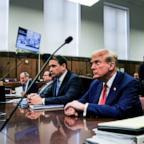'Doomsday Clock' Moves Away From Midnight but Only by 1 Minute
Scientists move symbolic clock from five to six minutes from midnight.
Jan. 14, 2010— -- The world can breathe a sigh of relief today... kind of.
A group of international scientists this morning announced that they are moving the hands of the symbolic "Doomsday Clock" away from midnight -- or the figurative apocalypse -- but only by one minute.
The clock, which is maintained by the Bulletin of the Atomic Scientists, was designed to reflect how close civilization is to "catastrophic destruction." First set at seven minutes to midnight, the clock has been moved only 18 times since its creation in 1947.
The group, which includes more than a dozen Nobel laureates, last moved the hands of the clock in 2007, from seven to five minutes before midnight to reflect the threat of a "second nuclear age" and the challenges presented by global warming.
Today, at a press conference in New York, the Bulletin announced that despite the looming threats of nuclear weapons and climate change, it would move the hands of the clock from five to six minutes before midnight.
"By shifting the hand back from midnight by only one additional minute, we emphasize how much needs to be accomplished, while at the same time recognizing signs of collaboration among the United States, Russia, the European Union, India, China, Brazil, and others on nuclear security and on climate stabilization," the Bulletin of the Atomic Scientists said in a statement.
Citing collaborative efforts by world leaders to reduce nuclear arsenals, secure nuclear bomb-making materials and pledge to limit greenhouse gas emissions, the group said the world was facing a "hopeful" state of affairs.
The Bulletin also said that the election of President Barack Obama, along with his efforts to initiate arms reduction talks with Russia and negotiations with Iran to close its nuclear enrichment program, affected its decision.
"We are poised to bend the arc of human history," said Lawrence M. Krauss, co-chair of the Bulletin's Board of Sponsors and a professor at Arizona State University's School of Earth and Space Exploration and its physics department.
Still, Krauss said the Bulletin chose one minute to highlight the precariousness of the current global situation.
"What that means is that there's great potential for it to move in either direction depending on what happens," he said, adding that while there's been a "sea change" in attitude and the expansion of possibilities, there still hasn't been a lot of action.
"That's hopeful enough to move it but just by a little bit," he said.




